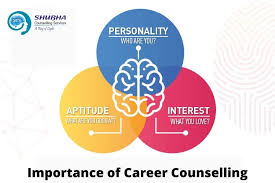The journey to college can be an exciting yet challenging time for high school students and their families. With so many options to consider and requirements to meet, navigating the college admissions process can seem daunting. However, with careful planning, preparation, and guidance, students can successfully navigate this journey and find the right college fit for their academic and personal goals. In this comprehensive guide, we’ll explore the key steps and strategies involved in the college admissions process, from researching colleges to making final enrollment decisions.
Researching Colleges: Finding Your Fit
The first step in the college admissions process is researching colleges and universities that align with your academic interests, career goals, and personal preferences. Consider factors such as location, campus culture, size, academic programs, extracurricular opportunities, and financial aid offerings. Attend college fairs, information sessions, and campus tours to learn more about different institutions and their offerings.
Standardized Testing: Preparing for Success
Standardized tests such as the SAT or ACT are an important component of the college admissions process for many institutions. Prepare for these tests by taking practice exams, studying content areas, and familiarizing yourself with the format and timing of the tests. Consider whether you need to take SAT Subject Tests or other standardized exams required by specific colleges.

Application Preparation: Crafting Your Story
Once you’ve identified the colleges you’re interested in, it’s time to start preparing your college applications. Many colleges accept the Common Application, which allows you to apply to multiple schools using one application. Alternatively, some colleges have their own application platforms. Gather all necessary materials, including transcripts, test scores, letters of recommendation, and personal essays, and begin crafting your application materials.
Letters of Recommendation: Highlighting Your Strengths
Request letters of recommendation from teachers, counselors, employers, or other individuals who can speak to your academic abilities, character, and accomplishments. Choose recommenders who know you well and can provide insight into your strengths, achievements, and potential for success in college. Provide your recommenders with any necessary forms or information for submission.
Financial Aid and Scholarships: Exploring Your Options
Financing a college education can be a significant concern for many students and families. Complete the Free Application for Federal Student Aid (FAFSA) to determine your eligibility for federal grants, loans, and work-study programs. Research scholarship opportunities from colleges, private organizations, and other sources, and submit scholarship applications and essays by the specified deadlines.
Application Submission: Crossing the Finish Line
Once you’ve completed your applications and gathered all necessary materials, it’s time to submit them to the colleges of your choice. Pay attention to deadlines for early decision, early action, regular decision, and rolling admissions, and ensure that your applications are submitted on time. Proofread your application materials carefully for any errors or typos before submitting.
Waiting Period and Decisions: Managing Expectations
After submitting your applications, you’ll enter a waiting period while colleges review your materials and make admissions decisions. This waiting period can be stressful, but try to remain patient and focus on other aspects of your life. Once you receive acceptance letters, carefully consider your options, weighing factors such as academic programs, financial aid packages, and campus culture.
Transition to College: Preparing for the Next Chapter
Once you’ve made your final enrollment decisions, it’s time to prepare for the transition to college. Attend admitted student events, orientation programs, and connect with future classmates. Begin preparing for the transition by considering housing options, course registration, and other logistics. Submit any final documents required by colleges, such as updated transcripts or immunization records, and stay organized throughout the process.
Conclusion: Your College Journey Begins Here
The college admissions process is an exciting and transformative journey that marks the beginning of a new chapter in your academic and personal life. By staying informed, proactive, and focused on your goals, you can successfully navigate this journey and find the right college fit for you. Remember to reach out to your school counselors, teachers, and mentors for guidance and support along the way. Your college journey begins here, and the possibilities are endless.



